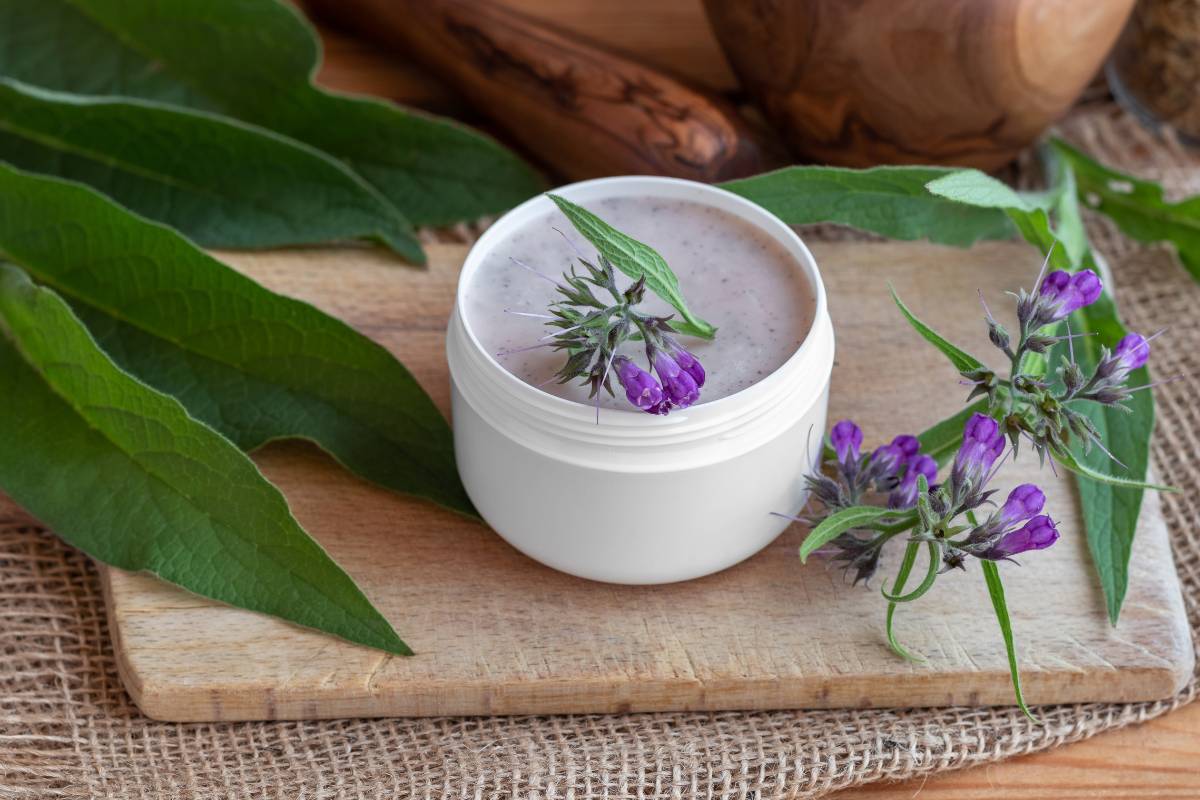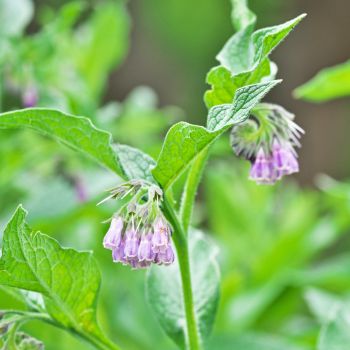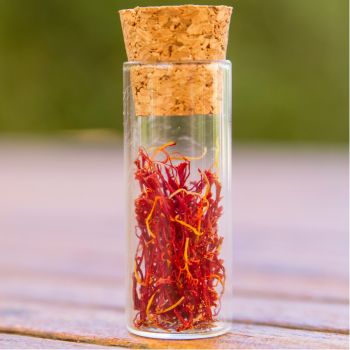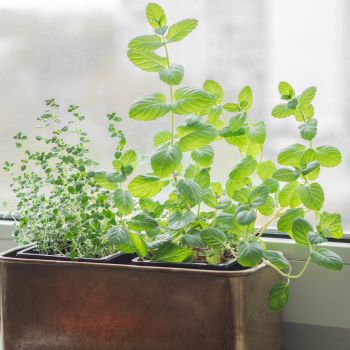A staple in permaculture practices worldwide, comfrey easily earns its place in the garden. Comfrey's long tap roots have the ability to draw nutrients from deep in the soil, making it a useful as well as attractive plant. Nutrient-rich comfrey leaves can be used to speed up compost making or even as a home grown mulch. Comfrey has long been used in natural medicine and cosmetics, too, making it a true multi-purpose plant.
Let's explore the multifaceted world of comfrey, its cultivation, benefits and practical applications for your garden.
What is Comfrey?
Scientifically known as Symphytum officinale, comfrey is a herbaceous perennial growing to around 1.2m. Originating in Europe, this robust plant boasts rosettes of large, hairy grey-green leaves on stems that are topped by clusters of bell-like mauve flowers. It thrives in various climates, from cool temperate to tropical; in warm regions plants are evergreen but rarely flower, while in colder areas plants will flower, shed seed, then die down over winter.
Comfrey's secret lies in its roots: they grow deep into the subsoil - up to an astounding 2m in favourable conditions - accessing nutrients that elude more shallow-rooted plants. This unique characteristic gives comfrey superhero status in nutrient cycling. By chopping its leaves and using them for mulch or compost, you're basically bringing buried nutrients back up to the soil's surface. Handy, right? If you're in a rainy area comfrey can be particularly useful in trapping and reusing nutrients before they get washed deeper into the soil.
How to Grow Comfrey
Growing comfrey is easy, but as with any plant it's wise to consider its growth habits before planting.
Comfrey thrives in full sun or partial shade, needing a minimum of three hours of sunlight daily. While comfrey is easy to get going in the garden, this attribute can be a drawback if you no longer want the herb in your space. Due to its persistent nature, selecting a permanent location in the garden is advisable to prevent plants spreading into unwanted areas. Comfrey can also be grown in containers, though container-grown plants' ability to cycle nutrients will obviously be limited.
Comfrey seeds can be slow to germinate, taking up to 30 days even in ideal conditions. Stratifying seeds before sowing them can speed up the process. In cool regions, planting can occur in either autumn or spring, while in subtropical areas, the ideal planting window is from February to October. Sow seeds in trays or punnets 5mm deep at soil temperatures of 20-22°C. Transplant established seedlings to the garden using a spacing of 60cm between plants.
Resilient in nutrient-poor soils, comfrey shouldn't need additional feeding during the growing season but will benefit from regular watering. Prune plants to the ground in late autumn or spring to promote vigorous regrowth.
Harvest leaves sparingly in the first year, then as needed. Although generally pest-resistant, vigilance against slugs and snails is recommended.
Practical Uses of Comfrey
Beyond its ornamental appeal, comfrey has many uses both in the garden and out. Note that although comfrey is classified as a herb, it contains pyrrolizidine alkaloids (PAs) that can be harmful to humans; eating comfrey is not recommended.
- Pollinator plant: Comfrey’s vibrant purple blooms attract bees, making it an excellent addition to pollinator-friendly gardens.
- Organic mulch: Comfrey leaves made a nutrient-rich mulch that gradually decomposes, enriching the soil. Grown under fruit trees, comfrey can be slashed and the leaves left in place to suppress weeds, retain soil moisture and release nutrients back into the soil.
- Compost accelerator: Adding whole or chopped comfrey leaves to compost enhances its nutrient content and speeds up the composting process.
- Compost tea: Comfrey leaves readily decompose in water, creating a nutrient-rich brew ideal for fertilising plants.
- Chicken fodder: Often grown around chicken coops, small quantities of comfrey can be fed to chickens as a high-protein fodder. While nutritious, comfrey leaves should be offered in moderation due to their pyrrolizidine alkaloid (PA) content. Excessive consumption can pose toxicity risks, particularly in grazing animals.
- Poultice: Comfrey has long been used as a poultice to heal bones, giving rise to its alternative name, ‘knitbone’. This use may originate more from the plant’s roots than its leaves. The roots reportedly set hard like plaster when they are mashed or grated and mixed with water then left to dry.
- Ointments and creams: Comfrey, often combined with olive oil or beeswax, makes a soothing skin ointment that’s reported to have anti-inflammatory properties. Comfry’s roots and leaves contain Allantoin, a substance thought to promote cell renewal, meaning that it’s often included in soothing and calming natural skincare products.
As you can see, comfrey offers a myriad of benefits to gardeners. Incorporate this powerhouse plant into your garden and you’ll be reaping its rewards for years to come.
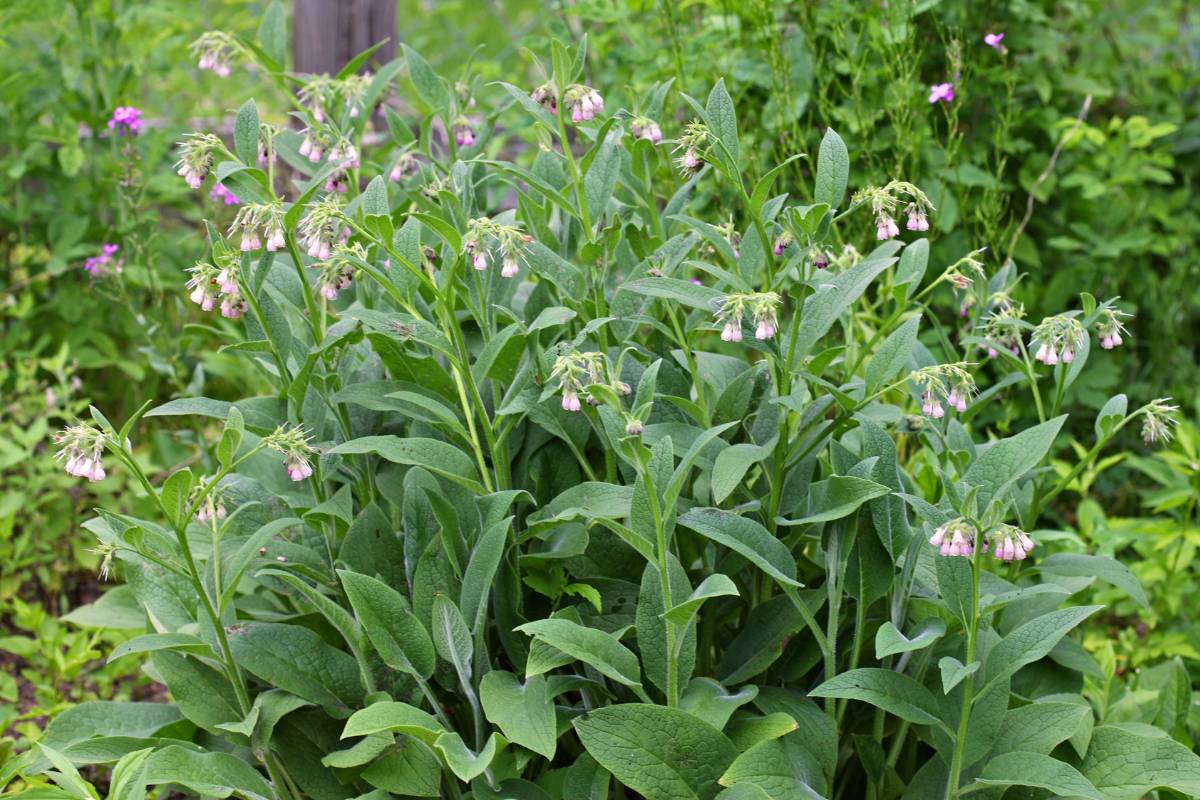
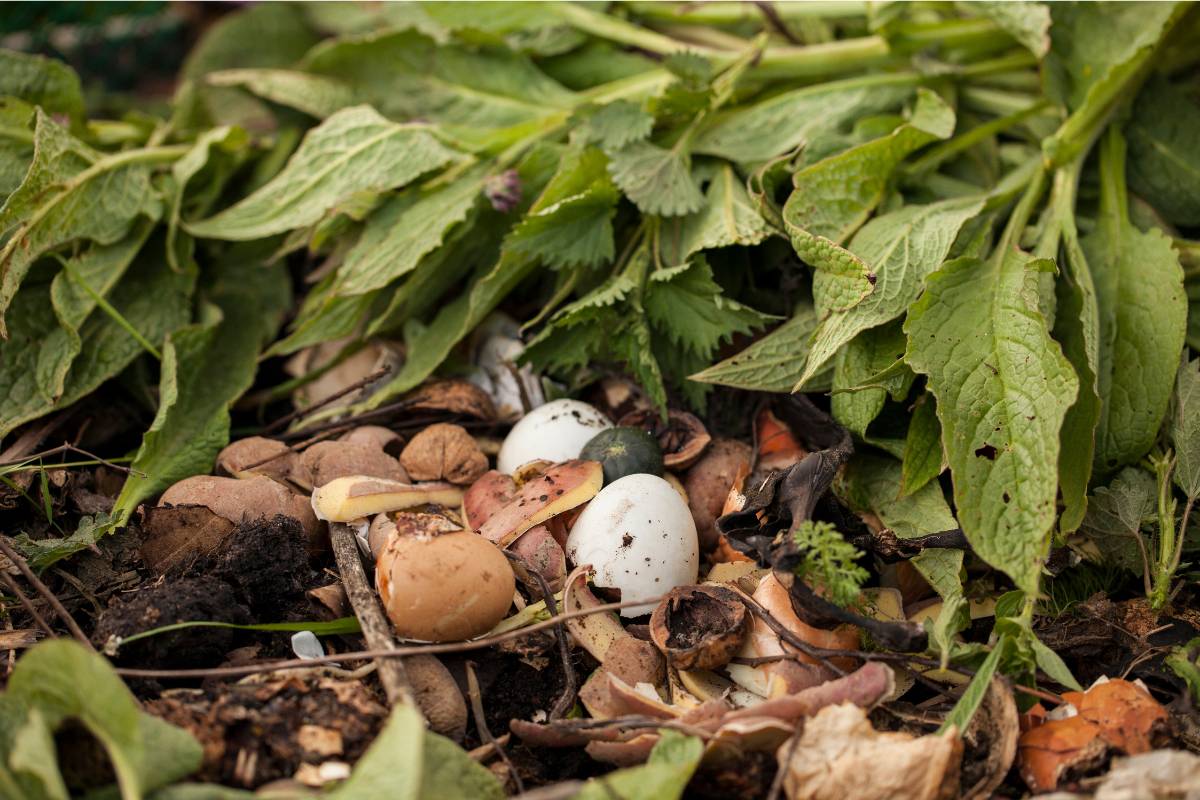
.jpg)
